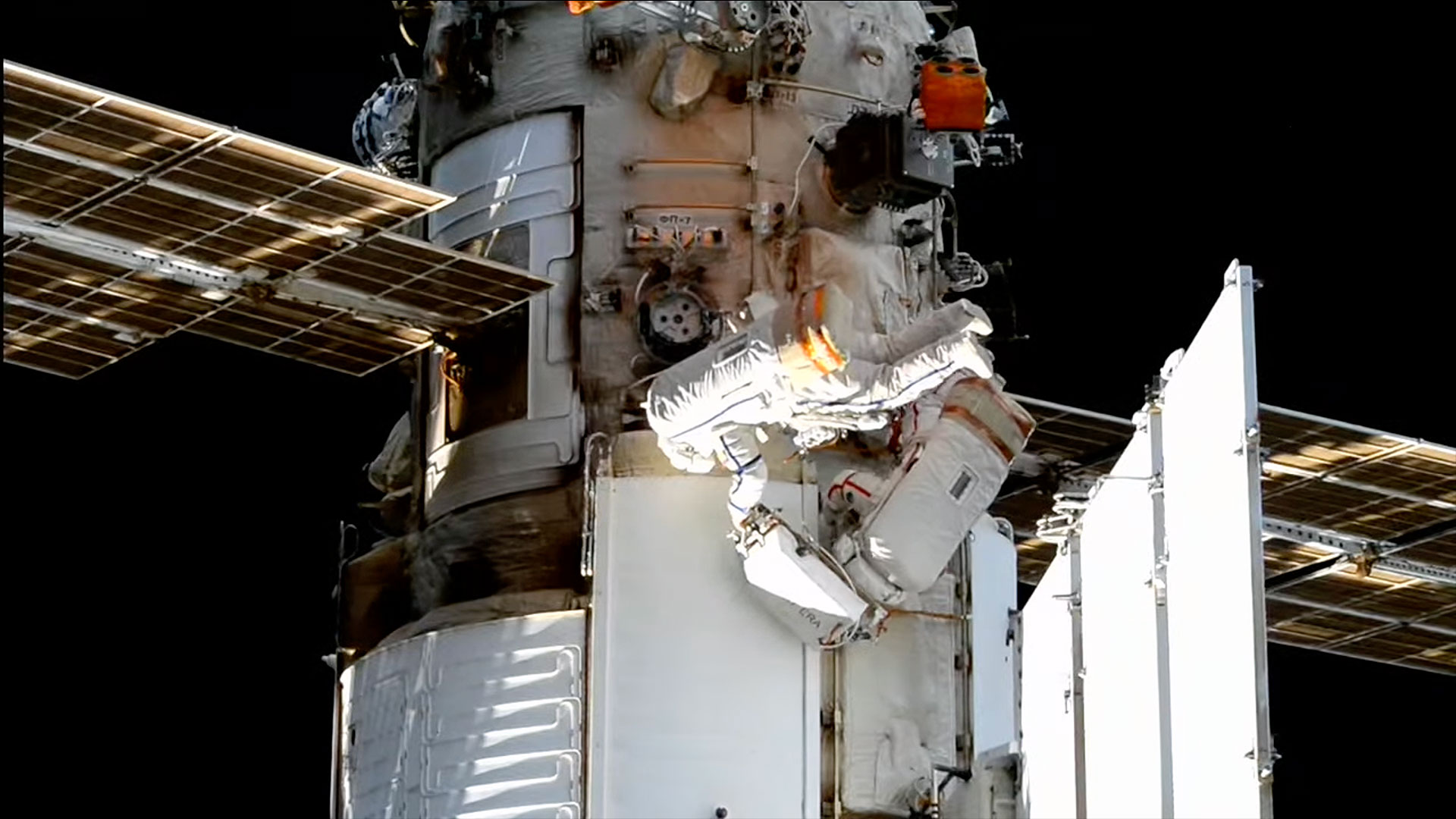Go Cosmic Sightseeing with Orion, the Hunter
Go out on any clear night this week and look south ?and, assumingyou live in the Northern Hemisphere, you will see one of the best known stargroupings in the sky, the constellation Orion.
Orion is a hunter in the mythologies of many peoples aroundthe world. His body is marked by a rough rectangle of four bright stars.
Betelgeuse and Bellatrix mark his shoulders, and Saiph andRigel mark his knees. In between is a perfect line of three equally brightstars canted at an angle: Alnitak,? Alnilam, and Mintaka comprise the Beltof Orion. From his Belt hangs his Sword: three more stars in a vertical line,more closely spaced.
All of this can be readilyseen without a telescope in all but the most severely light polluted skies.Look carefully at the two brightest stars in Orion: Betelgeusein the upper left and Rigel in the lower right. Do they look the same color toyou? Betelgeuse is a red giant: a huge ancient star glowing red and varying inbrightness over time. In contrast, Rigel is a young blue giant, living life inthe stellar "fast lane."
With binoculars or a small telescope,Orion is an incredibly rich area of the sky to explore. It includes a varietyof double and multiple stars, and the finest nebula in the entire sky.
Rigel is a beautiful example of an unequal double star. Ina small telescope, its bright primary star is accompanied by a tiny speck of asecondary star, looking much like a star with a planet.
Two of the three Belt stars are multiples. Mintaka at theright end of the belt is a wide double, and Alnitak at the left end is a triplestar: a close bright pair accompanied by a distant third star.
Breaking space news, the latest updates on rocket launches, skywatching events and more!
The greatest treats, however, reside in the Sword of Orion.All three of the "stars" which make up the Sword are in fact multiplestars or star clusters ? the distinction is a hard one to make in areas as richin stars as this. All are involved in complex nebulosity.
But it is the middle "star," Theta, which takesthe prize. First of all, it is a double star, Theta 1 and Theta 2. Theta 2 is awide double star with 5th and 6th magnitude components.Theta 1 is a quadruple star, sometimes known as The Trapezium. Four starsranging from 5th to 8th magnitude are easily visible in asmall telescope (on this magnitude scale, larger numbers represent dimmerobjects, with stars around magnitude 6 being about the dimmest most people canspot from rural locations). Two more tiny stars can also be seen with a largetelescope on a steady night.
But that's not all: Theta is in the heart of the OrionNebula, the brightest nebula in the sky.
Visible in any telescope, this nebula rewards detailedstudy. The bright central region is kidney shaped. Under dark skies two faintwings stretch out covering an area several times larger than the moon. A darkbay, known as the Fish Mouth, divides the main Orion Nebula, Messier 42, fromits smaller companion, de Mairan's Nebula (Messier 43).
There are dozens more deep sky objects awaiting thecelestial explorer in Orion, including one of the most challenging objects inthe sky, the Horsehead Nebula. This famous dark nebula, just south of Alnitak,is relatively easy to photograph but frustratingly difficult to see with atelescope, requiring perfect skies, a large telescope, and a special HydrogenBeta filter.
- How toPick a Telescope
- More NightSky Features from Starry Night Education
- Beginner'sGuide to Astrophotography
This article was provided to SPACE.com by Starry Night Education, theleader in space science curriculum solutions.
Join our Space Forums to keep talking space on the latest missions, night sky and more! And if you have a news tip, correction or comment, let us know at: community@space.com.

Geoff Gaherty was Space.com's Night Sky columnist and in partnership with Starry Night software and a dedicated amateur astronomer who sought to share the wonders of the night sky with the world. Based in Canada, Geoff studied mathematics and physics at McGill University and earned a Ph.D. in anthropology from the University of Toronto, all while pursuing a passion for the night sky and serving as an astronomy communicator. He credited a partial solar eclipse observed in 1946 (at age 5) and his 1957 sighting of the Comet Arend-Roland as a teenager for sparking his interest in amateur astronomy. In 2008, Geoff won the Chant Medal from the Royal Astronomical Society of Canada, an award given to a Canadian amateur astronomer in recognition of their lifetime achievements. Sadly, Geoff passed away July 7, 2016 due to complications from a kidney transplant, but his legacy continues at Starry Night.
